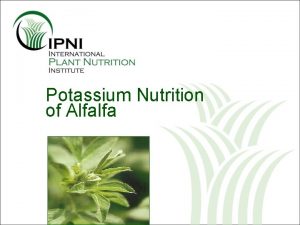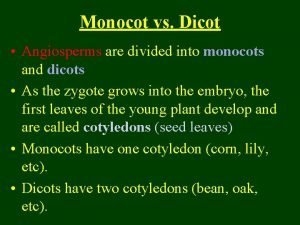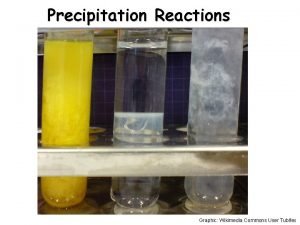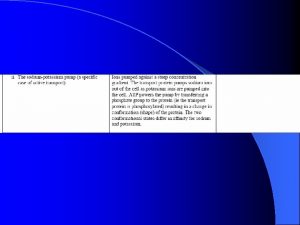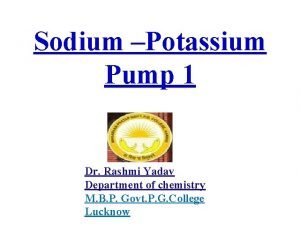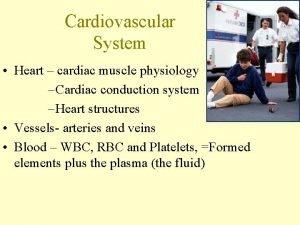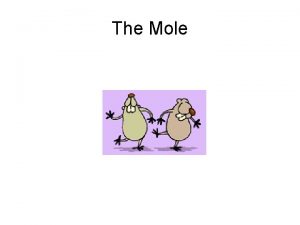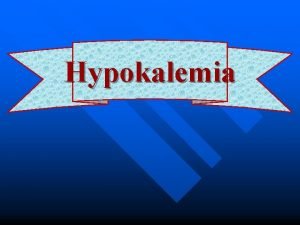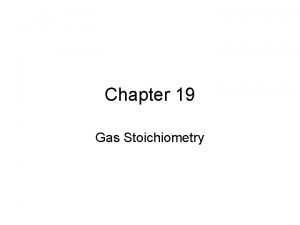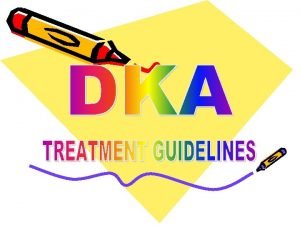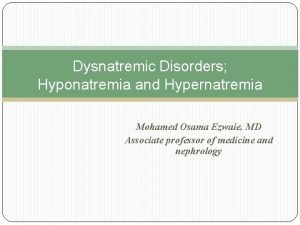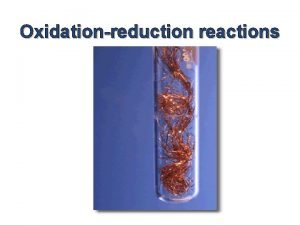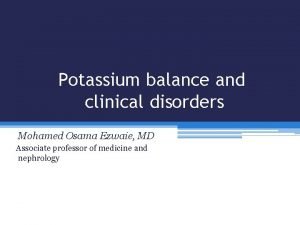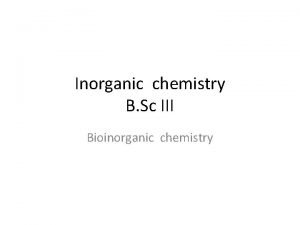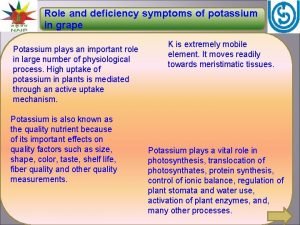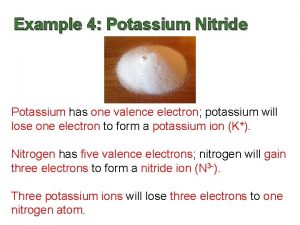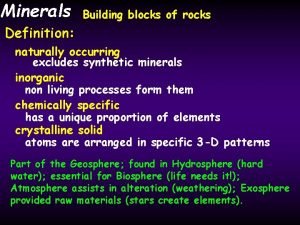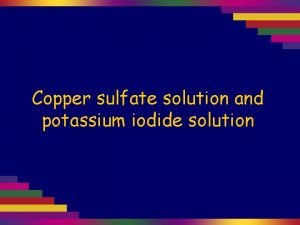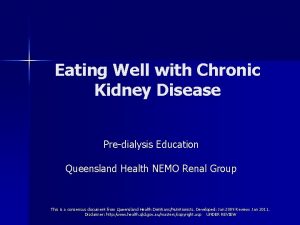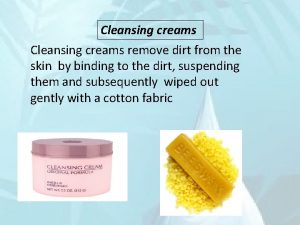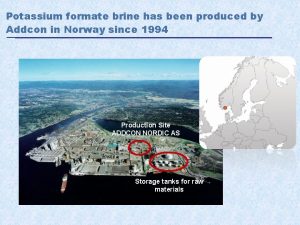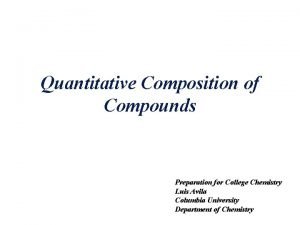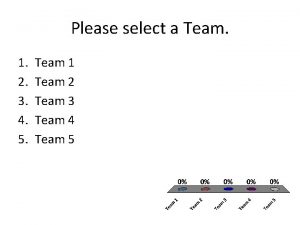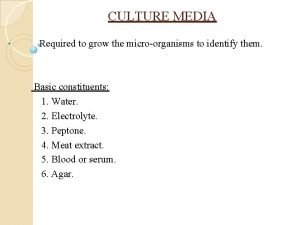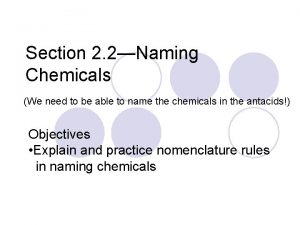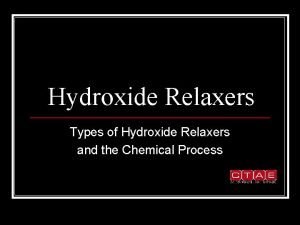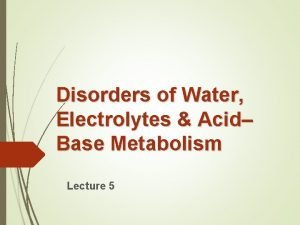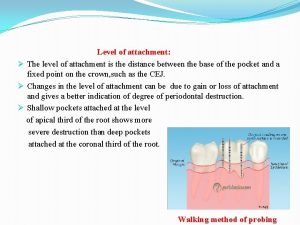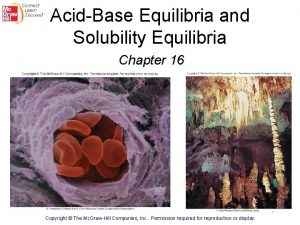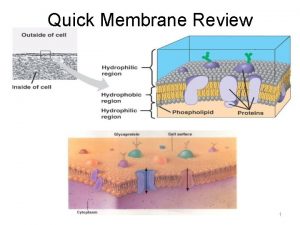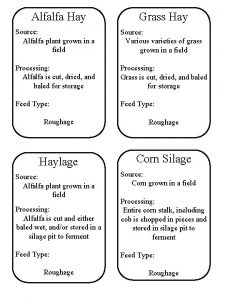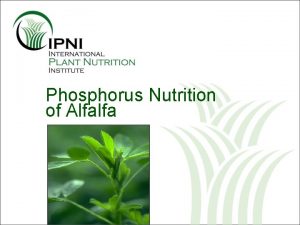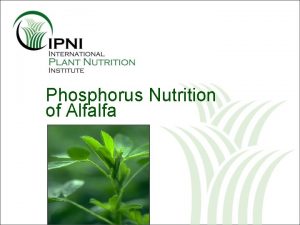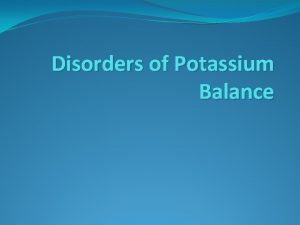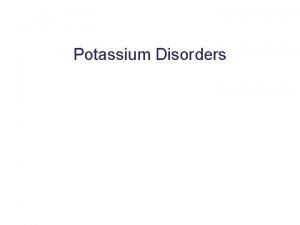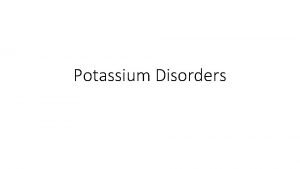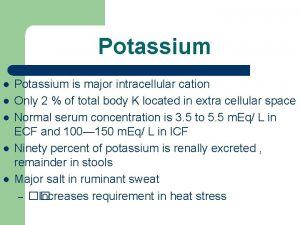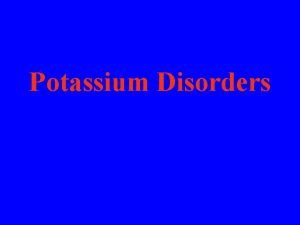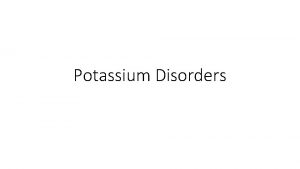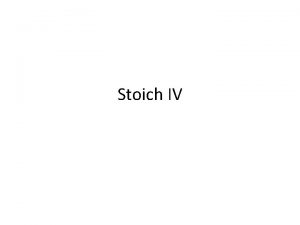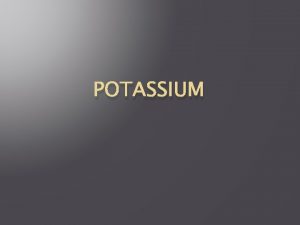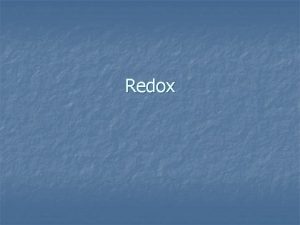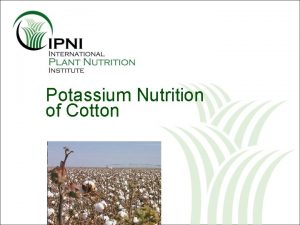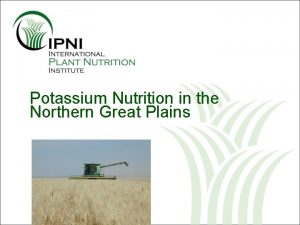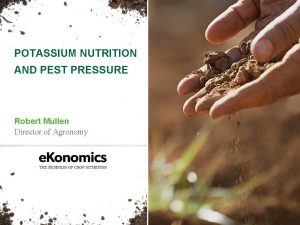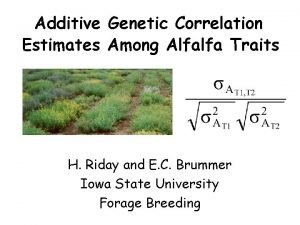Potassium Nutrition of Alfalfa Potassium K Nutrition of














































- Slides: 46

Potassium Nutrition of Alfalfa

Potassium (K) Nutrition of Alfalfa Outline: 1. 2. 3. 4. 5. 6. 7. Plant development Diagnosis Yield and quality Economics Irrigation and record yields Cation competition Balanced nutrition

Alfalfa Production • In addition, Canada has 11 million acres yielding 1. 4 ton/A • U. S. crop value $7 billion per year, 2000 -2003 USDA-NASS; Statistics Canada

Alfalfa Root Development • Most lateral roots are near the soil surface for the first year, but more deep lateral roots develop as the plant ages • Alfalfa has lower root density than many grasses and a deeper rooting zone • Nutrient applications increase root growth, enabling roots to obtain moisture and nutrients from greater volume of soil

Alfalfa Root Morphology (Approximately 2 Months after Planting) • Dryland – Deeper penetration – Fewer but longer laterals – More secondary branches • Irrigated – Shallower – More but shorter laterals – Less secondary branches Dryland Weaver, 1926 (NE) Irrigated

Alfalfa Root Morphology (Approximately 3 Months after Planting) • Dryland – Root system is more profusely branched – Branches reached same depth as tap root – Shallower root system • Irrigated – Fewer branches – Greater rooting depth – Tap root is the dominant structure Weaver, 1926 (NE) Dryland Irrigated

Alfalfa Root Morphology End of First year • Dryland – Greater number of branches in upper 1 ft. of soil – Maximum depth of 5 ft. – Roots oriented downward • Irrigated – Fewer branches in upper 1 ft. of soil – Maximum depth of over 6 ft. – Greater lateral extent of root system Dryland Weaver, 1926 (NE) Irrigated

Alfalfa Root Morphology July 10, Second Year • Dryland – Depth of over 9 ft. – Roots oriented downward – Little lateral extension • Irrigated – Depth of nearly 10 ft. – Greater lateral extention Dryland Weaver, 1926 (NE) Irrigated

Factors Restricting Root Growth Reduce Nutrient Uptake Disease damage Poor nodulation Soil compaction Insect damage Temperature Nutrient deficiencies Excess salt or sodium Poor drainage Low oxygen Acidity

Recovery of K from Various Soil Depths Depth of placement, in. Recovery, % of applied Surface 41 0 -6 29 6 -12 19 12 -18 16 18 -24 10 30 -36 11 Recovery at the end of the growing season with K placed in the Spring at various depths in an established alfalfa stand Peterson and Smith, 1973

Diagnosis of Nutrient Deficiencies • Visual Observation • Soil Testing • Tissue Analysis

In K-deficient alfalfa, small white or yellowish spots first appear around the outer edges of older leaves

K Deficiency in Alfalfa Moderate K Deficiency Severe K Deficiency

Typical K Concentrations (at optimum fertility) • Stems near top of plant contain the most K • Leaf K concentration is similar among upper and lower leaves • Roots contain less K • Forage containing 2. 5% K removes 60 lb of K 2 O per ton of dry matter harvested Lanyon and Smith, 1985 Plant part and growth stage K, % on dry matter basis Stems: near ground level 2% Stems: near top up to 6% Leaves: 1. 8 - 2. 2% Roots: 1. 1% Forage harvested at early bloom: 1. 8% to 2. 5% Top 6 in. at bud to early bloom: 2. 0% to 3. 5%

Shoot K, % K Concentration Declines with Maturity Growth Stage Barton and Reid, 1977 (WV)

Soil Testing and Plant Analysis • Soil Testing – Verify that K levels are being maintained – Soil p. H 6. 5 or higher for efficient N fixation • Plant Analysis – Usually sample the top 6 in. at harvest – Indication of adequate K fertility: • <2% indicates insufficient K for winter hardiness • Optimum yields usually contain around 2. 5% K • Record yield of 10 tons/A (non-irrigated), K content of 3%

K Deficiency Hurts More Than Yield Adequate K Improves: – Plant persistence – Number of shoots per plant – Shoot yield Deficient K: – Reduces root starch storage – Reduces protein concentration in root – Results in poor survival and slow shoot growth Li et al. , 1997 (IN)

K Fertilization Increases Nodule Activity K 2 O added, lb/A Grewal and Williams, 2002 (Australia)

K Fertilization Improves Hay Quality K 2 O added, lb/A Grewal and Williams, 2002 (Australia)

K Helps Reduce Winterkill in Alfalfa Plant counts taken in May as % of those previous September No K 100 lb K 2 O/yr Stand density (%) 100 80 60 40 20 0 1971 1972 1973 1974 1975 1976 1977 Bailey, 1983 (MB) Year

Alfalfa Responses to K in Mixed Stands • Largest where soil K fertility levels are low • Increases over the life of the stand • Includes quality as well as yield – Increased proportion of legume to grass more protein • Increases in irrigated production

Response to K Increases Over Life of Stand Hay yield, tons/A 4 -yr total Initial soil test K was 35 ppm (low) Klausner and Goyette, 1993 (NY) Most Economic Rate 1989 1992 1990 1991 Fertilizer K 2 O, lb/A

Response to K Increases Over Life of Stand Landisville Most Economic Rate Forage K, % Alfalfa response to K at two sites Yield, tons/A Rock Springs Initial soil test K ranged from 130 to 170 ppm Beegle, 1992 (PA) Fertilizer K 2 O, lb/A

Response to K Increases Over Life of Stand Greatest response occurred in 5 th year Added K, lb K 2 O/A Berg et al. , 2003 (IN)

Response increases after intensive management Sheard et al. , 1988 (ON) Yield, tons/A Most Economic Rate 1986 1985 Forage K, % • Alfalfa response to K under intensive 5 -cut management • Initial soil test K of 170 ppm in 1984, declined to 80 ppm in the unfertilized treatment by spring 1987 1985 Fertilizer K 2 O, lb/A 1986

Soil K Levels: Turn K Fertilization into Profit Example: Annual economic return to K fertilizer use: Assuming $90 per ton of hay and K 2 O at $0. 15 per pound (price ratio of 3 lb hay per lb of K 2 O) Soil test K category Yield response K 2 O rate Net return tons/A lb/A $/A Very low 1. 2 335 57. 75 Low 1. 0 260 51. 00 High 0. 2 90 4. 50

Economics of K Fertilization The most economic rate of K fertilization changes as the ratio of K prices to hay prices changes Price Ratio Soil Test K Category 2 3 4 5 Most economic rate of K 2 O (lb/A) Very low 425 335 270 220 Low 330 260 214 175 High 130 90 60 40

Profitability: Short vs. Long-Term The yield increase in response to K application gets larger as the alfalfa stand ages

Alfalfa stand density, plants/ft 2 K Fertilization According to Soil Test Recommendation Maintains Alfalfa Stands Recommended K rate K 2 O application rate, lb/A Burmester et al. , 1991 (AL)

Alfalfa Response to Soil p. H Yield, tons/A 3 2 1 0 4. 5 5 5. 5 6 Soil p. H Follet and Wilkinson, 1995 6. 5 7

Liming Acid Soil Improves Alfalfa Growth and Nutrient Recovery Alfalfa yield, ton/A p. H 6. 1 p. H 5. 3 Yr 3 p. H 4. 7 Yr 3 Yr 2 Yr 1 Walworth and Sumner, 1990 (GA) Yr 3 Yr 1

Alfalfa shoot composition Liming Acid Soil Improves Alfalfa Growth and Nutrient Recovery Walworth and Sumner, 1990 (GA)

How Does this Change with Irrigation?

Record Yield: Researchers at University of Arizona (Yuma) set record for alfalfa yield in a year: 24. 1 tons/A alfalfa hay in 10 cuttings • • • Optimal and uniform irrigation Chopped hay removed immediately after cutting N fertilizer regularly added – was it needed? 460 lb P 2 O 5/A added before planting K management unknown

0 Koenig, 2002 (UT) 200 400 K 2 O rate, lb/A Too much in one application Best economic return Cumulative Hay Yield, Tons Optimum K Rate in Irrigated Alfalfa: An Example 600

Placement and Application Options • Establishment – Broadcast to build up soil test K before seeding – Banded starters should contain mostly P • Maintenance – Apply following harvest to replace removal – High rates: split over several cuts to avoid salt injury – To boost winter hardiness, apply before critical fall growth period (before last 6 weeks of growth) – When soil K levels are high, spring applications can lead to higher K levels than desired, and may be unnecessary

K Impacts Fall Harvest more than Spring Harvest, 2001 Fall Harvest, 2000 K applied, lb K 2 O/A) • Yield response to K found in last harvest of 2000 • For first harvest of 2001, no response to K fertilization was observed Reason: K can be released from soil minerals during winter and spring Volenec, 2002 (IN)

Manure Management • Manure supplies many nutrients – but usually not in the ratio required for alfalfa! • Physical problems – compaction, crown damage, leaf burn, salinity • Nutritional problems – N can stimulate weeds – excessive K can cause cation – imbalance in dairy feed rations

Luxury Uptake of K for Dairy Feed • K in alfalfa varies from <1. 5% to >3% – Luxury uptake when soil K is very high – K levels above 3% unnecessary – Liquid manure systems efficiently recycle K • High K forage: A concern for dry dairy cows – Leads to milk fever, retained placentas after calving – For the transition period (2 to 4 weeks before calving) forage with <2% K desired; dietary K should be <1. 2% – Corn silage, grains, distillers grains are low K feeds – Anionic salts (chlorides or sulfates of NH 4+, Mg, or Ca) can help correct the problem

Tissue Mg, % K Competes with Other Cations for Plant Uptake: Mg Magnesium Concentrations in Alfalfa K applied, lb K 2 O/A Burmester et al. , 1991 (AL)

Tissue Ca, % K Competes with Other Cations for Plant Uptake: Ca Calcium Concentrations in Alfalfa K applied, lb K 2 O/A Burmester et al. , 1991 (AL)

Sodium, ppm K Fertilization Reduces Uptake of Other Soil Cations: NA Sodium Concentrations in Alfalfa K applied, lb K 2 O/A James, 1988 (UT)

Alfalfa hay yield, ton/A/yr Balanced P and K Nutrition Is Essential for Optimal Yields and Stand Maintenance Berg et al. , 2003 (IN)

Fertilization According to Soil Test Recommendations Yield, tons/A Recommended K rate K applied, lb K 2 O/A Burmester et al. , 1991 (AL)

Summary – K Nutrition of Alfalfa • Alfalfa takes up and removes large amounts of K from the soil • Fertilization is essential for high yields, stand longevity, and winter hardiness • Fertilized to optimum, forage contains 2 to 3% K • Application: pre-plant and following harvests • Apply recommended rates to avoid luxury uptake

International Plant Nutrition Institute (IPNI) 655 Engineering Drive, Suite 110 Norcross, GA 30092 -2837 Phone: 770 -447 -0335; Fax 770 -448 -0439 Website: www. IPNI. NET Reference 06128
 Succulent roughage examples
Succulent roughage examples Nutrition
Nutrition Monocot vs dicot cross section
Monocot vs dicot cross section Strontium valence electrons
Strontium valence electrons Shorthand electron configuration for potassium
Shorthand electron configuration for potassium How much potassium in dr berg wheatgrass juice powder
How much potassium in dr berg wheatgrass juice powder Potassium nitrate and lead iodide
Potassium nitrate and lead iodide Sodium potassium pump animation
Sodium potassium pump animation Image search
Image search 3 sodium out 2 potassium in
3 sodium out 2 potassium in Potassium period
Potassium period Can fanny play violin much worse
Can fanny play violin much worse Potassium sparing diuretics mechanism of action
Potassium sparing diuretics mechanism of action Mol per liter
Mol per liter Mild hypokalemia
Mild hypokalemia Chlorine gas + potassium bromide
Chlorine gas + potassium bromide Potassium replacement
Potassium replacement Sodium correction in hyponatremia
Sodium correction in hyponatremia Copper oxide and magnesium
Copper oxide and magnesium Ecg in hypokalemia
Ecg in hypokalemia Sodium-potassium pump notes
Sodium-potassium pump notes Molar mass of potassium
Molar mass of potassium Symptoms of potassium
Symptoms of potassium Bohr model drawing
Bohr model drawing Potassium bohrs model
Potassium bohrs model Valence electrons for k
Valence electrons for k Orthoclase vs plagioclase
Orthoclase vs plagioclase Copper sulfate and potassium iodide
Copper sulfate and potassium iodide Nemo kidney disease
Nemo kidney disease Ideal properties of vanishing cream
Ideal properties of vanishing cream Formate brines
Formate brines Molar mass of potassium dichromate
Molar mass of potassium dichromate Hcl+ koh
Hcl+ koh 3 sodium out 2 potassium in
3 sodium out 2 potassium in Potassium tellurite agar
Potassium tellurite agar Potassium magnetometer
Potassium magnetometer Potassium oxide
Potassium oxide Relaxer strengths
Relaxer strengths Sir mortimer wheeler soil layer method
Sir mortimer wheeler soil layer method Sulfur cycle in soil
Sulfur cycle in soil Anion gap formula
Anion gap formula Gingival attachment
Gingival attachment Is ag an ion
Is ag an ion Potassium bromine and krypton
Potassium bromine and krypton Saltatory conduction animation
Saltatory conduction animation Electron dot structure worksheet
Electron dot structure worksheet Potassium richard sachet
Potassium richard sachet

